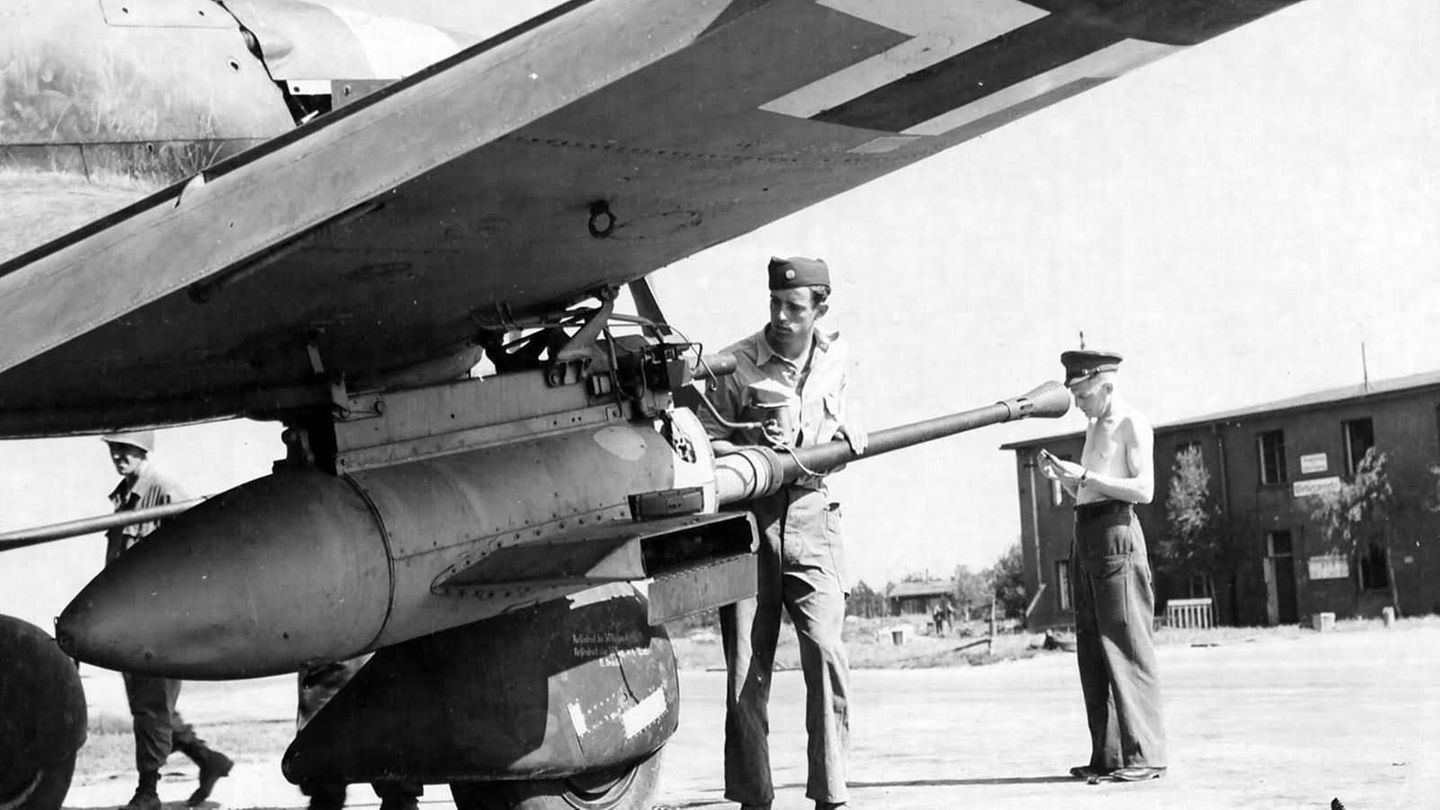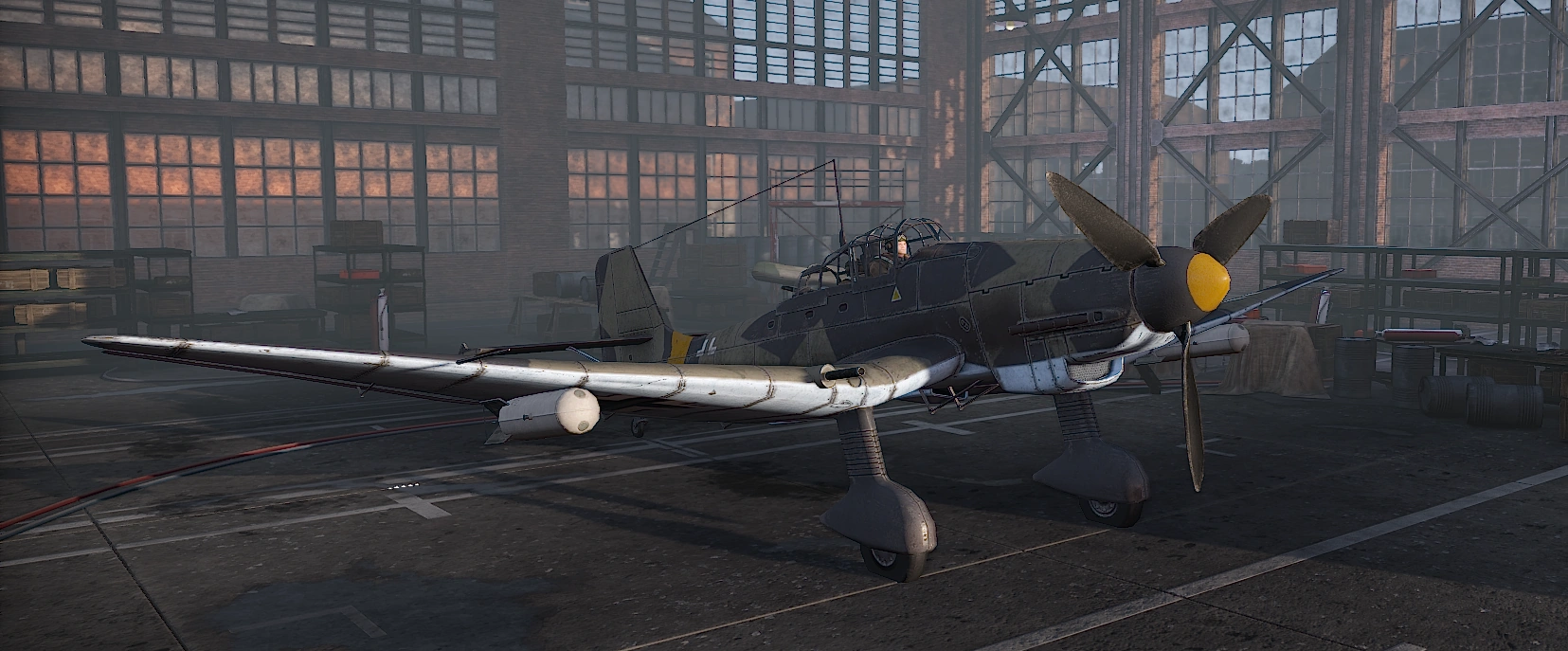Stuka Ju 87 - Few aircraft have ever caused as much fear to veteran ground troops and helpless civilians as the Luftwaffe's Junkers Ju 87 dive bombers. The Ju-87, known simply as a dive bomber (from the German word for "Sturzkampfflugzeug"), the Ju-87, was one of the first aircraft specifically designed for that tactic.
Although not even of British war standard, the Ju 87 fought on every front between 1939 and 1945. It was adapted and used in many other roles throughout the war. The Ju 87's fixed undercarriage, including improvised airstrips in the field, provided a robust platform for takeoff and landing, but at the cost of airspeed due to drag. However, It also had some advanced features for the era, including a device that pushed the plane out of a steep dive if the pilot blacked out and lost control.
Stuka Ju 87

It was the first combat aircraft to operate during World War II. Germany on September 1; When the invasion of Poland began in 1939, the Luftwaffe had 366 Ju 87s ready, and three of these aircraft flew the first bombing mission of the war, launching the attack eleven minutes before Germany's official declaration. Hostilities The objective of this mission was to demolish the Polish demolitions on the bridge over the Vistula River at Dirscha. However, the mission failed and the Poles destroyed the bridge before the Germans arrived.
Aircraft Photo Of 494083
Although best known for attacking ground forces, the Ju 87 Stuka sank more ships than any other aircraft type in history. Like the US Navy's Douglas SBD; The Stuka was well suited as an anti-ship weapon, and Ju 87 pilots quickly learned to attack from the front, following the ship's evasion at a 45-degree angle. Ju 87s successfully engaged the Polish fleet, destroying almost the entire fleet in port, costing two Allied ships, and sinking several destroyers and sloops during the invasion of Norway, and the large ships that later rescued the Allied forces at Dunkirk.
After the war, The Ju 87G "Gustav" was used in the Eastern Front of the Soviet Armored Corps. Powered by a Junkers Jumo 211 engine and equipped with two specially modified Flak 18 37mm high-velocity anti-aircraft guns, the aircraft proved effective at targeting the armored rear flanks of Soviet tanks.
Hans-Ulrich Rudel of the Luftwaffe became Germany's most decorated fighter pilot, despite only shooting down nine enemy planes. However, during the course of the war, it successfully destroyed about 500 Soviet tanks, the equivalent of more than 3 tank platoons of the Red Army.
Although Germany had not yet completed construction on its aircraft carrier, the Graf Zeppelin; A small batch of naval Ju 87s were built for use on board. These Ju-87C models have folding wings and can carry torpedoes. Instead, some complete aircraft were operated from a ground base.
Oxford Diecast Junkers Ju 87 Stuka 1:72 Scale
Although nearly 6,000 Stuka dive bombers were built, only two remain intact in the world today. One is a ground attack variant at the Royal Air Force Museum outside London, and the other is at the Chicago Museum of Science and Industry. A third of the two wrecked planes has been restored to airworthy condition. Washington, D.C. Owned by the late Paul Allen's Flying Heritage and Combat Armor Museum in Everett.
Now Senior Editor for 1945; Peter Suciu is a Michigan-based writer and editor of the magazine, Contributed to over four dozen newspapers and websites. He writes regularly about military hardware and is the author of several books on military headdresses, including A Gallery of Military Headdresses, available on Amazon.com. Peter is also a contributing writer for Forbes.
Professional Biography: Peter Suciu, Senior Editor for 1945, is a Michigan-based writer and editor of the magazine; He has published more than twenty years in a career in journalism, with more than 3,000 pieces published in more than four dozen newspapers and websites. He is a military hardware, gun record He writes regularly on cyber security and international affairs. Peter is also a contributing writer for Forbes. You can follow him on Twitter: @PeterSuciu.Homepage Aviation History Here the Luftwaffe lost 20% of its Ju 87 Stuka dive bombers during the Battle of Britain despite being escorted by fighters.

Thus the Luftwaffe flew 20% of its Ju 87 Stuka dive bombers during the Battle of Britain, despite being escorted by fighters.
Seagull Models 90″ Ju 87 Stuka Giant Scale
The Ju-87 Stuka was the closest the Germans had to a precision bomber and was used until the Battle of Britain.
The Junkers Ju 87 or Stuka (Sturzkampfflugzeug from "dive bomber") was a German dive bomber and ground attack aircraft. First flown in 1935, designed by Hermann Pohlmann. The Ju 87 made its combat debut in 1937 against the Luftwaffe's Condor Legion while serving the Axis forces in the Spanish Civil War during World War II.
National Health Service (NHS) researcher Francis Dickinson points out on Quora that the Ju-87 Stuka was the closest the Germans had to a precision bomber and was used until the Battle of Britain. The Germans managed to badly destroy three chain camps with them as well as other equipment.
The Stuka is not the fastest aircraft in the sky, but its weakness is its high dive bombing ability, which allows for a precision bombing approach. To bomb, you proceed in a straight line at a constant speed towards the target. This means that when you start bombing, you are signaling what you will do in the next few seconds. This means that the attackers who are trying to kill you know not only where you are, but also where you are going. It's hard for fighters to protect you because you lose a lot of altitude - and dive-bombing is constant speed and other planes dive to gain speed, so most planes can trade their altitude for speed to catch a dive-bomber. In addition, If you have fighter escorts when you start a dive bomb. Either they didn't join you on the dive at all (unless they joined you at the end) or they got with you. very much. Speed up the dive (if they are not with you at the end). This makes it a very easy target whenever it tries to bomb something, and even opportunistic fighters can catch a Stuka when there are fighters around and it is effectively defended.'
Airfix Stuka Ju 87 Trop
'Then there is the issue of bombing the radar stations and removing them. The wooden huts they used were probably knock-down, but there wasn't much that couldn't be repaired or replaced in a few hours. As can be seen under the belt construction, a direct hit to a tower for a tower means less bomb damage than kinetic damage. Explosions and flying metal won't do much. Bombardment by Stukas badly damaged three stations, but the chain was almost broken, and at one point the Germans did not notice that the chain had been broken.
“The Germans did not realize how important the British radar system was. They have their own radars that can scan the area to detect objects, similar to British radars - but what they don't have is a remote Dowding system to combine reports from radar and ground observers. fighter jets to track the same aircraft; You can actually use observers and different radar systems to plot the planes on a map and then send the pilots to where their targets and threats are. Below is the most famous room used to track German planes, complete with maps and markers for moving them. Without it, the radar is an early warning system, not part of a command and control network.
They were there to protect the Stuka along with the German fighters. But since the British had radar, they knew where and when the Germans would come, so they could ensure that the Germans were outnumbered in most engagements. The Spitfires would be the first to enter and the German fighters had to attack the Spitfires or be shot down by formation. The less capable Hurricanes would then swoop in on the bombers, punching holes in many and shooting some down. Because the British always knew where the German planes were coming from. A few opportunistic observers (which the Germans assumed were patrols) could always wait to see if the fighters withdrew; The escort could take out their bombers so the patrol couldn't follow.'
Three German Junkers Ju 87D dive bombers; Stukas Yugoslavia in October 1943, then SG 3 (Fighter-Bomber Wing 3) operated in the Mediterranean region.
Junkers Ju 87a Stuka
'There are statues.
Sig p365 tulster holster, sig p365 iwb holster, sig holsters p365, sig p365 sas holster, sig p365 xl holster, sig p365 hybrid holster, appendix holster sig p365, safariland holster sig p365, sig p365 belt holster, sig p365 holster, sig p365 purse holster, sig sauer p365 holster
0 Comments